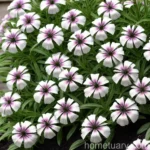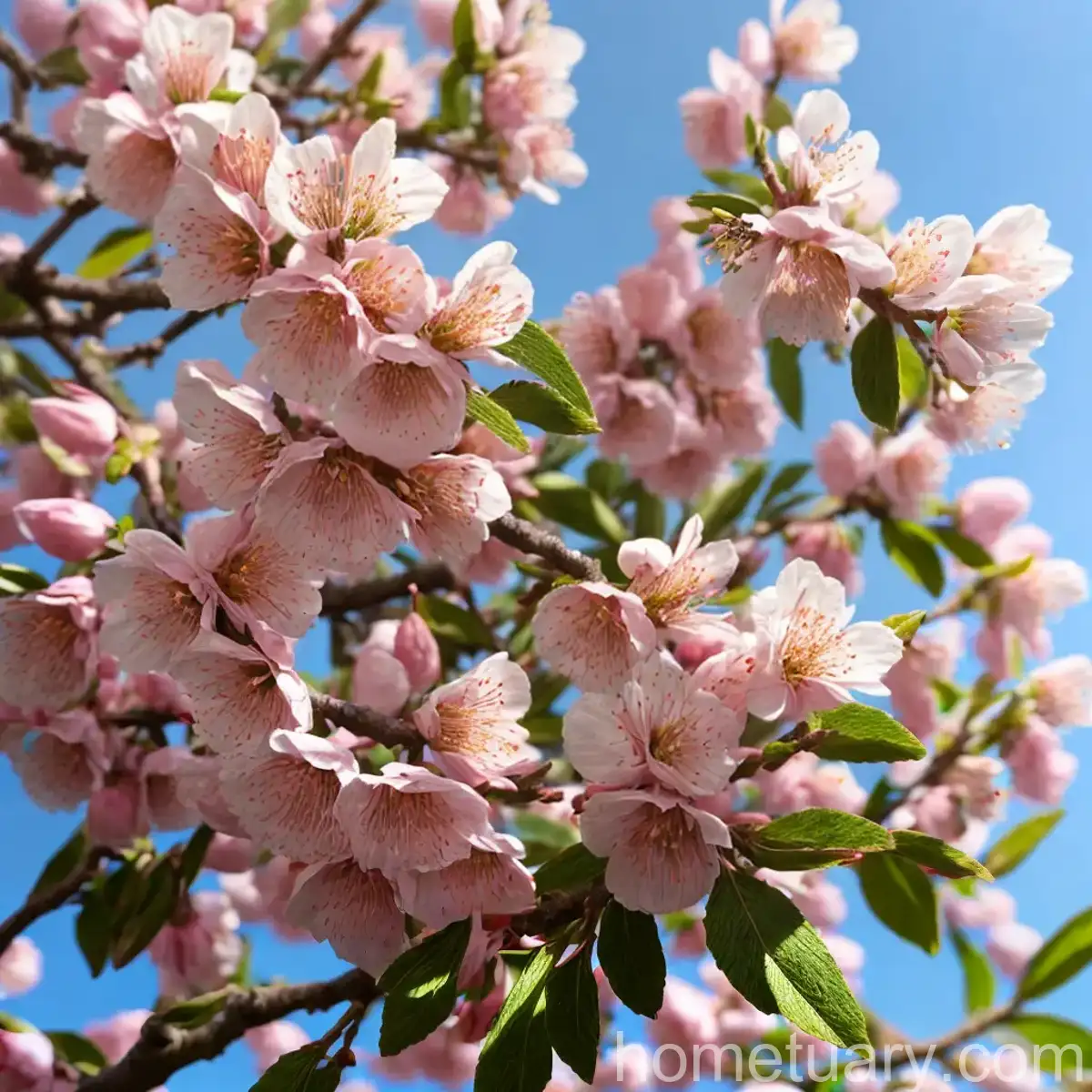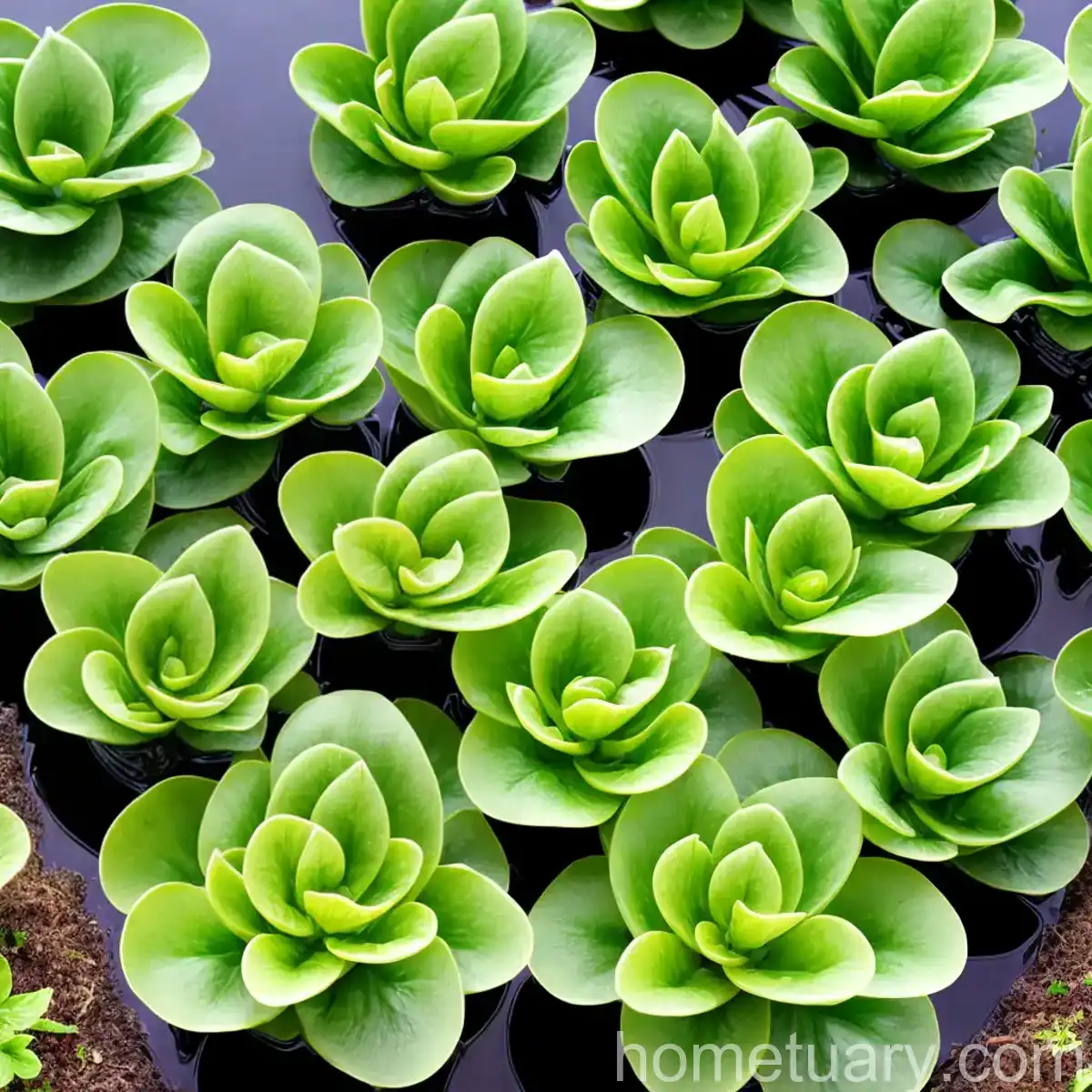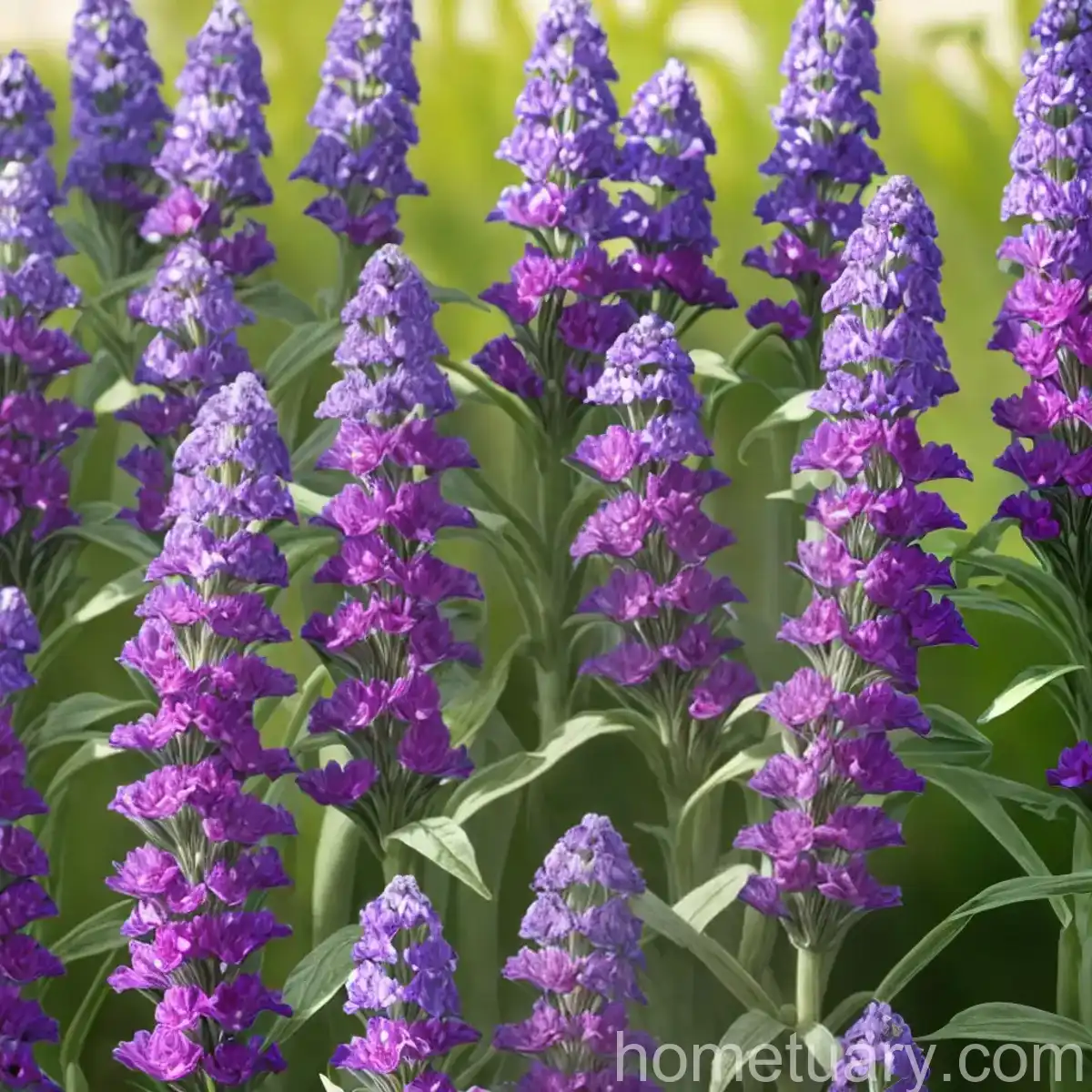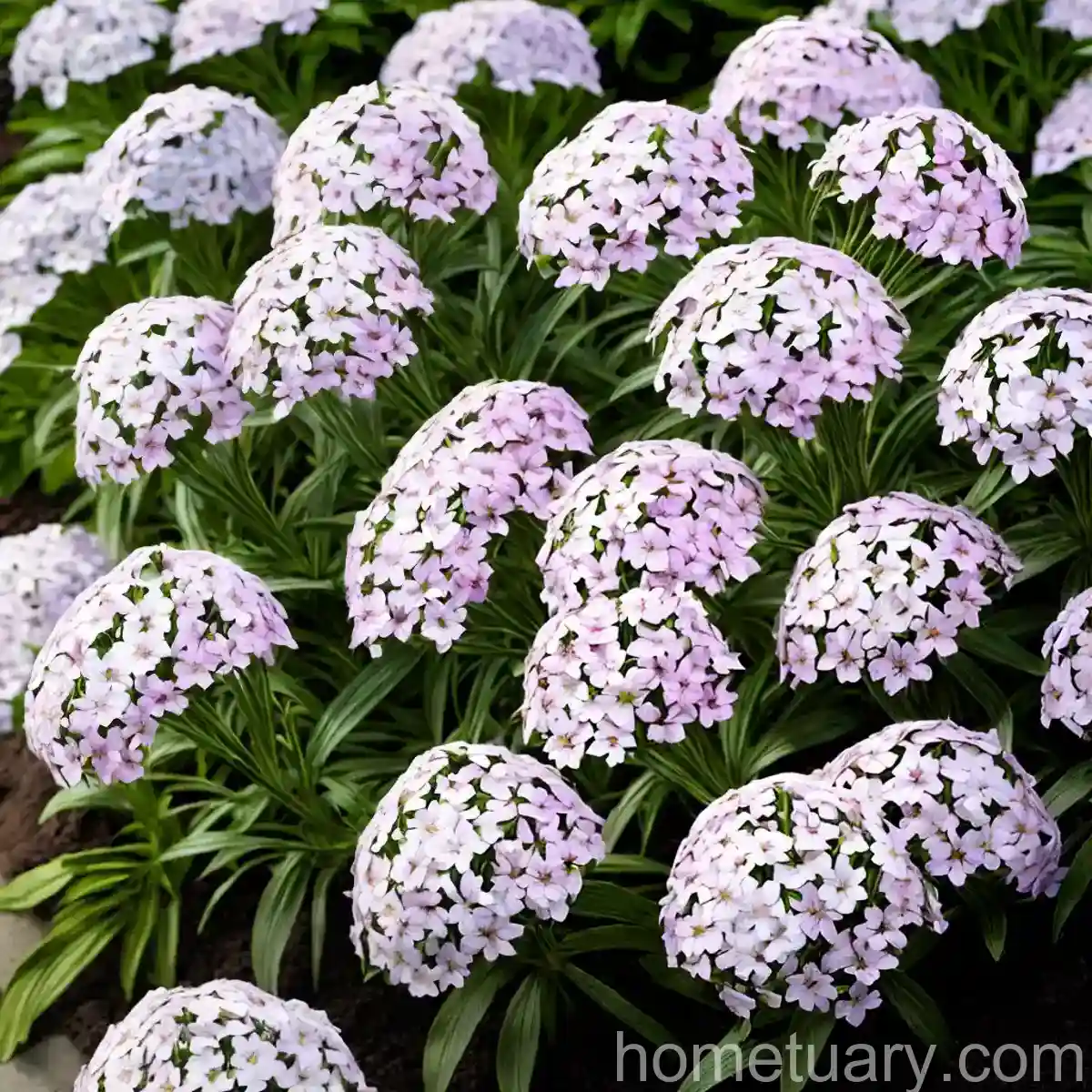The Astonishing Shockwave Phlox (Phlox paniculata ‘Shockwave’)
The Shockwave Phlox, scientifically known as Phlox paniculata ‘Shockwave’, is a vibrant and captivating perennial that has become a beloved addition to gardens around the world. This stunning cultivar is recognized for its striking beauty, resilience, and low maintenance requirements, making it an ideal choice for both novice and experienced gardeners.
In this comprehensive guide, we will delve into the enchanting world of Shockwave Phlox, exploring its culture, uses, care requirements, propagation methods, common diseases and pests, and fascinating fun facts. Whether you are already an admirer of this extraordinary plant or are considering introducing it into your garden, this article is your go-to resource for unlocking the secrets of the spectacular Shockwave Phlox.
What is the Shockwave Phlox (Phlox paniculata ‘Shockwave’)?
The Shockwave Phlox, a member of the Phlox paniculata species, is a captivating herbaceous perennial that is renowned for its abundant and vibrant blossoms, which adorn gardens with a kaleidoscope of colors. This stunning cultivar belongs to the Polemoniaceae family and is native to North America, where it graces landscapes with its breathtaking blooms.
The Phlox genus encompasses a wide array of perennial and annual plants, with the Phlox paniculata species being particularly prized for its ornamental value and resilience. With its captivating appearance, ease of cultivation, and ability to attract beneficial pollinators, the Shockwave Phlox has become a cherished favorite in gardens, landscapes, and even floral arrangements.
Key Takeaways – Shockwave Phlox (Phlox paniculata ‘Shockwave’)
Before we embark on our exploration of the Shockwave Phlox, let’s highlight the key takeaways that will guide our journey through the fascinating world of this beloved plant.
Culture
- The Shockwave Phlox is a herbaceous perennial with a mesmerizing display of vibrant, fragrant blooms.
- It thrives in temperate climates and is particularly well-suited to gardens in USDA hardiness zones 4 to 8.
- This cultivar is known for its long-lasting, colorful blossoms, making it a delightful addition to perennial gardens and border plantings.
Uses
- Shockwave Phlox is commonly used to infuse gardens with vibrant color, providing a show-stopping display of blossoms during the summer months.
- Its attractive flowers make it an ideal choice for cut flower arrangements, adding a touch of natural elegance to indoor spaces.
Water
- The Shockwave Phlox thrives in well-drained soil and benefits from regular watering to maintain soil moisture, particularly during dry spells.
- Avoid overwatering, as excessive moisture can lead to root rot and other detrimental conditions.
Sunlight
- This cultivar flourishes in full sun to partial shade, although it tends to produce more profuse blooms when exposed to ample sunlight.
Fertilizer
- Applying a balanced, all-purpose fertilizer in the early spring can help promote healthy growth and abundant flowering.
- When using fertilizers, always follow the manufacturer’s instructions to prevent overfeeding and potential damage to the plant.
Soil
- Shockwave Phlox prefers rich, moist, and well-drained soil with a slightly acidic to neutral pH level.
- Amending the soil with organic matter can enhance its fertility and structure, promoting optimal growth and blooming.
Pruning
- Pruning dead or faded flowers and removing diseased or damaged foliage can encourage continuous blooming and maintain a neat, attractive appearance.
- Avoid excessive pruning during the fall, as this can interfere with the plant’s ability to withstand winter conditions.
Propagation
- Shockwave Phlox can be propagated through division, stem cuttings, or seed sowing, providing gardeners with various options for expanding their plant collection and sharing the beauty of this cultivar with others.
Container Popularity
- Due to its compact growth habit and stunning flowers, Shockwave Phlox is a popular choice for container gardening, adding visual allure to patios, balconies, and other outdoor spaces.
Container Common Diseases
- While Shockwave Phlox is generally resilient, it may be susceptible to certain diseases, including powdery mildew and root rot, when grown in containers.
- Proper watering, adequate air circulation, and regular monitoring can help prevent and manage container-related diseases.
Disease Diagnosis
- Monitoring the plant for symptoms such as yellowing leaves, wilting, or abnormal discoloration can aid in the early diagnosis and treatment of potential diseases.
Common Pests
- Aphids, spider mites, and caterpillars are among the common pests that may target Shockwave Phlox, potentially causing damage to the foliage and flowers.
- Implementing integrated pest management practices and using natural pest control methods can help protect the plant from pest infestations.
Botanist’s Tips
- Incorporating companion plants with complementary growth habits and care requirements can enhance the visual appeal of Shockwave Phlox and promote a harmonious garden ecosystem.
Fun Facts
- The name “Phlox” is derived from the Greek word “phlox,” which translates to “flame,” symbolizing the vibrant and captivating nature of the plant’s flowers.
- Shockwave Phlox is a magnet for pollinators, attracting butterflies, bees, and other beneficial insects to the garden.
- With proper care, this perennial can grace gardens with its spectacular blooms for many years, offering an enduring source of natural beauty and joy.
Links to External Resources
- The Royal Horticultural Society – Phlox paniculata ‘Shockwave’
- University of Maryland Extension – Growing Phlox
- Missouri Botanical Garden – Phlox paniculata
Now that we have established our roadmap for understanding the remarkable Shockwave Phlox, let’s embark on a captivating journey through its culture, care, and captivating allure.
Introduction to Shockwave Phlox
Garden phlox, also known as Phlox paniculata, is a herbaceous perennial plant that belongs to the Polemoniaceae family. The species is native to North America and is cherished for its ornamental value, resilience, and vibrant blossoms. Among the diverse cultivars within the Phlox paniculata species, the Shockwave Phlox stands out for its striking features and exceptional garden performance.
Shockwave Phlox: A Colossal Presence in Gardens
The Shockwave Phlox, with its mesmerizing display of vibrant flowers and lush foliage, commands attention in gardens, landscapes, and floral displays. This captivating cultivar is celebrated for its ability to thrive in diverse climates and its capacity to infuse outdoor spaces with a riot of colors, making it a sought-after addition to perennial borders, cottage gardens, and floral arrangements.
Embracing Diversity: Phlox paniculata ‘Shockwave’ Series
The Shockwave Phlox belongs to the esteemed ‘Shockwave’ series of Phlox paniculata cultivars, each of which has been meticulously bred to embody unique colors, growth habits, and disease resistance. This series has gained widespread acclaim for its exceptional garden performance and its capacity to captivate garden enthusiasts with an array of captivating blossoms.
The Timeless Allure of Phlox paniculata
With their enchanting flowers, graceful form, and alluring fragrance, Phlox paniculata cultivars have secured a place of reverence in the world of ornamental plants. These perennials are cherished for their versatility, effortlessly complementing a range of garden styles, from formal landscapes to cozy cottage gardens, and attracting an array of pollinators, adding vitality to outdoor spaces.
Cultivating Shockwave Phlox
Nurturing Growth: Tips for Exceptional Cultivation
Cultivating Shockwave Phlox requires attention to its cultural preferences and care requirements to ensure optimal growth, profuse blooming, and long-term vitality. By understanding its needs for water, sunlight, soil, and nurturing, gardeners can harness the full potential of this remarkable perennial, creating a vibrant tapestry of color in their outdoor spaces.
Providing for Water Needs
– Adequate Moisture: Shockwave Phlox thrives in moderately moist soil, benefiting from regular watering to sustain its hydration needs. During periods of drought or high temperatures, it is crucial to ensure that the plant receives sufficient moisture to prevent stress and encourage robust growth and blooming.
– Avoiding Waterlogged Conditions: While maintaining soil moisture is essential, it is equally important to avoid waterlogging, which can lead to root rot and compromise the plant’s health. Striking a balance between watering and soil drainage is paramount to the well-being of Shockwave Phlox.
Embracing Sunlight Requirements
– Full Sun to Partial Shade: Shockwave Phlox exhibits impressive adaptability to sunlight, thriving in both full sun and partial shade. However, for optimal blooming and overall vigor, it flourishes when provided with ample sunlight, which fuels its photosynthetic processes and encourages the production of vibrant blossoms.
– Partial Shade Considerations: In regions with intense summer heat, providing the plant with partial shade during the hottest part of the day can prevent stress and sunburn, particularly in climates with scorching temperatures.
Enhancing Soil Quality
– Fertile, Well-Drained Soil: Rich, fertile, and well-drained soil sets the stage for the optimal growth of Shockwave Phlox, allowing its roots to access essential nutrients while ensuring that excess water does not accumulate around the root zone, risking waterlogged conditions.
– Soil pH Considerations: Shockwave Phlox thrives in slightly acidic to neutral pH levels, and amending the soil with organic matter can enhance its structure, fertility, and moisture retention, creating an ideal environment for the plant to flourish.
Nourishing with Fertilizer
– Early Spring Application: Applying a balanced, all-purpose fertilizer in the early spring can provide Shockwave Phlox with an initial boost of nutrients, supporting vigorous growth, robust flowering, and the development of healthy foliage.
– Balanced Formulation: Selecting a fertilizer with balanced NPK (nitrogen, phosphorus, and potassium) ratios can provide the plant with the essential elements it needs for thriving, while avoiding excessive nitrogen that can promote excessive foliage growth at the expense of flowering.
Embracing Resilience: Disease Resistance
– Disease-Resistant Attributes: The Shockwave Phlox possesses notable resilience to certain diseases, offering gardeners a low-maintenance plant that can withstand common environmental stressors and potential health threats, allowing for its long-term magnificence to grace gardens.
– Disease Management Practices: Despite its resilience, monitoring for signs of diseases such as powdery mildew, leaf spots, and root rot is essential, enabling prompt intervention and preventive measures to safeguard the plant’s well-being.
Infusing Gardens with Shockwave Phlox
Envisioning Design: Integrating Shockwave Phlox into Garden Landscapes
The captivating allure of Shockwave Phlox transcends its individual beauty, offering gardeners the opportunity to harness its ornamental charm and vibrant blossoms to enhance the visual appeal of their outdoor spaces. By incorporating this perennial into diverse garden designs and settings, its captivating presence can enrich landscapes and transform outdoor environments.
Perennial Bliss: Shockwave Phlox in Perennial Borders
– Colorful Border Plantings: Shockwave Phlox is a natural fit for perennial borders, where its captivating blossoms and lush foliage can weave a tapestry of color alongside other perennial plants, creating a harmonious and vibrant display that evolves throughout the growing season.
– Design Considerations: When integrating Shockwave Phlox into perennial borders, consider its color palette, growth height, and blooming period to harmonize with adjacent plantings and create a balanced and visually dynamic composition.
Cottage Garden Charisma
– Enchanting Cottage Gardens: With their nostalgic charm and abundant blooms, Shockwave Phlox adds an air of romance and natural elegance to cottage gardens, where its profusion of flowers serves as a focal point and a magnet for pollinators, infusing the garden with vitality and enchantment.
– Companion Planting: Pairing Shockwave Phlox with traditional cottage garden favorites, such as delphinium, foxglove, and lavender, can create an enchanting tapestry of blooms, aromas, and textures, evoking the timeless allure of cottage gardens.
Versatile Container Gardening
– Compact Growth Habit: The compact and floriferous nature of Shockwave Phlox makes it well-suited for container gardening, allowing gardeners to adorn patios, balconies, and outdoor living spaces with its captivating blossoms and lush foliage, infusing these areas with natural beauty and charm.
– Container Selection: When growing Shockwave Phlox in containers, prioritize selecting pots with adequate drainage and a size that accommodates the plant’s growth habit, providing ample room for its roots to spread and thrive.
The Art of Nurturing Shockwave Phlox
Pruning for Abundant Blooms
– Encouraging Continuous Blooming: Removal of faded flowers and periodic pruning of the plant can stimulate the production of new flower buds, prolonging the blooming period and maintaining a neat, attractive appearance throughout the growing season.
– Pruning Considerations: The art of pruning Shockwave Phlox involves selectively removing spent blossoms and trimming back unruly growth, promoting a compact and floriferous habit while preserving the plant’s natural form.
Propagation: Sharing the Beauty
– Division: Shockwave Phlox can be propagated through division, allowing gardeners to multiply their plant collection and share the captivating beauty of this perennial with others, expanding its presence in gardens and landscapes.
– Stem Cuttings and Seed Sowing: For those seeking alternative propagation methods, stem cuttings and seed sowing offer additional avenues for introducing new plants, providing opportunities to propagate additional specimens and cultivate the captivating allure of Shockwave Phlox.
Navigating Disease Challenges
Vigilance Against Common Diseases
– Powdery Mildew: While Shockwave Phlox exhibits resilience to certain diseases, powdery mildew can pose a potential threat, particularly in humid or poorly ventilated conditions. Monitoring the plant for telltale signs can aid in early detection and intervention.
– Root Rot Prevention: Avoiding waterlogged soil and promoting adequate soil drainage are crucial steps in preventing root rot, a condition that can compromise the plant’s health and vitality.
Disease Management: Strategies for Protection
– Cultural Practices: Implementing good cultural practices, such as providing adequate air circulation, avoiding overhead watering, and maintaining optimal soil moisture levels, can contribute to disease prevention and overall plant health.
– Fungicidal Treatments: In cases where diseases pose a significant risk, the judicious use of fungicidal treatments can help manage and prevent the development of fungal diseases, safeguarding the well-being of Shockwave Phlox.
Shielding Against Common Pests
Guarding Against Pests
– Aphids and Spider Mites: These common pests are known to target Shockwave Phlox, potentially causing damage to the foliage and compromising the plant’s vitality. Vigilance and preventive measures are essential for safeguarding the plant against pest infestations.
– Beneficial Insects: Encouraging the presence of beneficial insects, such as ladybugs and lacewings, can provide natural pest control, reducing the population of damaging pests and promoting a balanced garden ecosystem.
Pest Management Approach
– Integrated Pest Management: Adopting an integrated pest management approach, which incorporates natural and cultural practices along with targeted treatments, can effectively manage pest pressures and protect the health of Shockwave Phlox.
– Natural Pest Control: Beneficial nematodes, insecticidal soaps, and botanical insecticides are among the natural pest control options that can help protect Shockwave Phlox from damaging pests, minimizing the need for harsh chemical interventions.
Botanist’s Tips for Harmonious Growth
Complementary Plant Pairings
– Visual Harmony: Pairing Shockwave Phlox with compatible companion plants, such as ornamental grasses, salvias, and coneflowers, can create a visually dynamic and harmonious garden composition, enriching outdoor spaces with a diversity of colors, textures, and forms.
– Considered Contrasts: When selecting companion plants for Shockwave Phlox, consider contrasting foliage, varying bloom times, and complementary growth habits to create a captivating juxtaposition that enhances the overall garden aesthetic.
Beneficial Pollinator Habitat
– Nectar-Rich Plantings: By incorporating nectar-rich plants alongside Shockwave Phlox, gardeners can attract and support beneficial pollinators, such as butterflies and bees, creating a vibrant and thriving habitat that celebrates the marvels of nature.
– Pollinator-Friendly Garden: Embracing the role of Shockwave Phlox as a pollinator magnet can contribute to the creation of a pollinator-friendly garden, promoting biodiversity and ecological balance in the outdoor environment.
Illuminating Fun Facts about Shockwave Phlox
A Symbol of Captivating Beauty
– Etymological Inspiration: The name “Phlox” derives from the Greek word “phlox,” signifying “flame,” which encapsulates the vibrant and captivating nature of the plant’s blossoms, which blaze with an array of rich hues.
– Pollinator Magnet: Shockwave Phlox is a beacon for pollinators, drawing butterflies, bees, and other beneficial insects to its nectar-rich blossoms, playing a vital role in supporting these essential members of the garden ecosystem.
– Enduring Garden Presence: With proper care and attention, Shockwave Phlox can grace gardens with its spectacular flowers for many years, offering an enduring source of natural beauty and joy that captivates both gardeners and nature enthusiasts alike.
In conclusion, the Shockwave Phlox, represented by the Phlox paniculata ‘Shockwave’ series, stands as an extraordinary testament to the timeless allure and captivating beauty of garden perennials. With its mesmerizing blossoms, resilience to environmental stressors, and ability to enchant pollinators, this cultivar has secured its place as a cherished favorite in gardens around the world.
Whether adorning perennial borders, infusing cottage gardens with romance, or gracing containers with its vibrant blooms, the Shockwave Phlox shines as a beacon of natural elegance and vitality. By embracing its cultural preferences, practicing attentive care, and harnessing its ornamental charm, gardeners can cultivate a tapestry of color and enchantment, elevating their outdoor spaces with the resplendent presence of the remarkable Shockwave Phlox.
As we celebrate the enduring beauty and allure of the Shockwave Phlox, we are reminded of the profound joy and wonder that nature bestows upon us, encapsulated in the captivating blossoms and graceful form of this exceptional perennial. With each vibrant petal and each beckoning bloom, the Shockwave Phlox beckons us to embrace the marvels of the natural world and revel in the ever-unfolding tapestry of life that surrounds us.
As we cherish the timeless and captivating presence of Shockwave Phlox, let us revel in the boundless beauty of the natural world and cultivate an enduring appreciation for the extraordinary plants that grace our gardens, our landscapes, and our lives.
References
- “Phlox paniculata ‘Shockwave’.” Royal Horticultural Society. Available: [https://www.rhs.org.uk/Plants/210809/i





